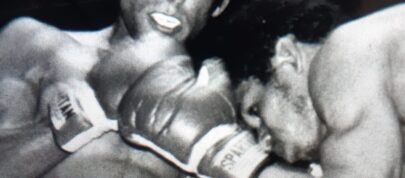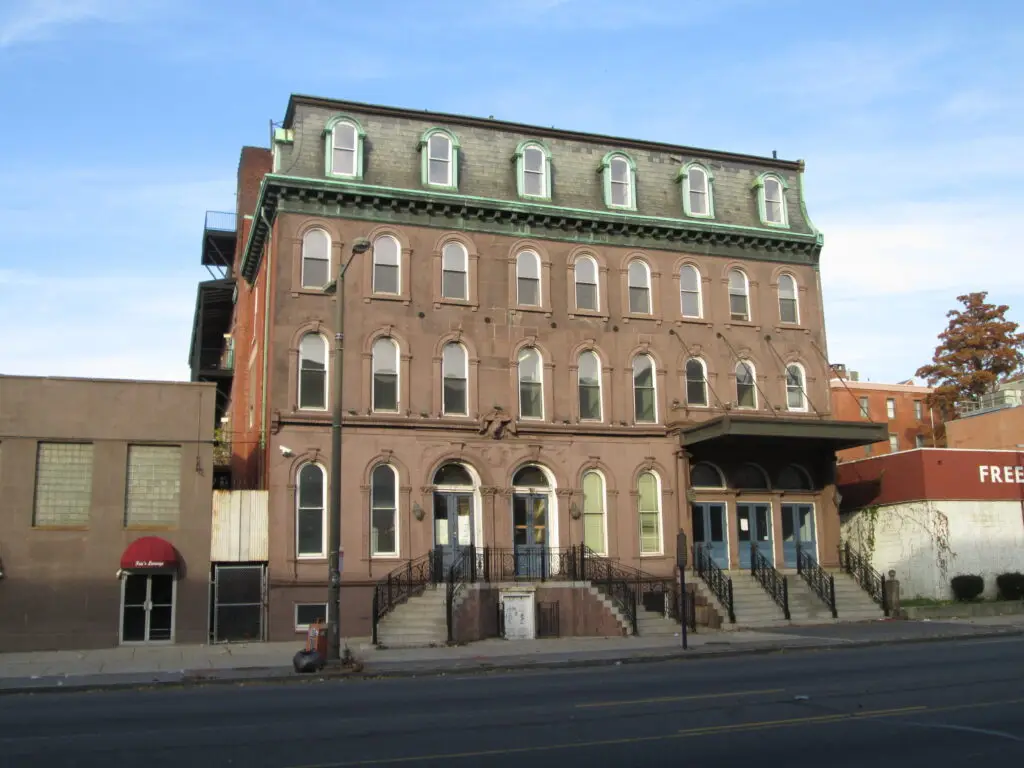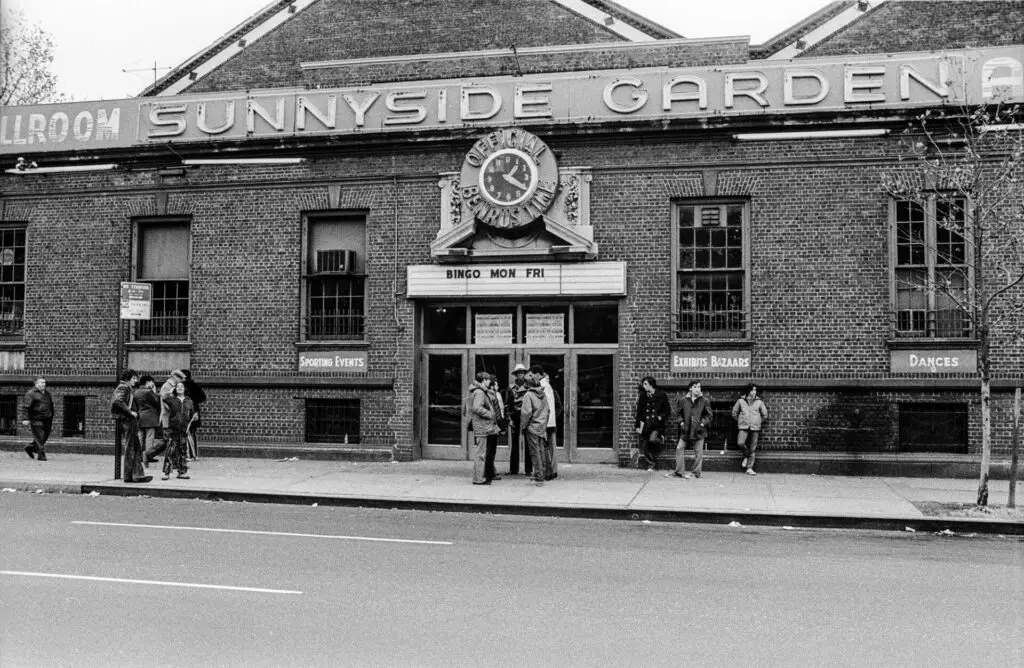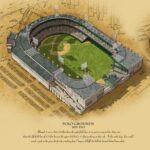
THE POLO GROUNDS: A Long-Lost Venue in Boxing History
By Jay Monte
Though a rare occasion today, boxing at the ballpark was once a longstanding tradition. While Yankee Stadium’s relationship with boxing is well known, New York City’s Polo Grounds also had an indelible impact on the sweet science. Having reached the 100th anniversary of the legendary heavyweight championship contest between Jack Dempsey and Luis Firpo, held at the Polo Grounds on Sept 24, 1923, lets look back at some of the more notable battles staged at this historic venue.
HISTORY OF THE STADIUM
Over a period of 88 years in existence, the Polo Grounds underwent a change of location and several expansions. Although mainly identified with baseball, the park, which opened in 1876, was the scene of many other athletic promotions. Football, as well as boxing, played a prominent role in the arena’s history, and throughout the years, the Grounds featured sports like track and field, soccer, tennis, and even auto racing.
The name of the field can be traced back to James Gordon Bennett Jr., the son of a noted newspaper publisher, who helped introduce polo to the American people. Bennett and his society pals did their playing on Fifth Avenue and 110th Street. A few years later, Bennett and his crew moved their activities to Westchester County, but the pastures continued to be called the “Polo Grounds.” When the park’s growing popularity exceeded its limited capacity, it was abandoned in 1888.
In the early days of baseball, the New York Giants used the Grounds as their home base, and in 1889, the team moved further uptown to Eighth Avenue and 155th Street. The fans so closely associated the Giants with their old stadium that the new field, initially dubbed Brotherhood Park, would soon also be known as the Polo Grounds.
From its modest beginning, with wooden stands able to hold a crowd of just 8,000, the Polo Grounds expanded until, by 1910, it had become a double-decker, capable of accommodating 20,000 fans. After a fire razed the stadium, the Grounds was rebuilt in 1911 with a seating capacity of 38,000. With further additions and improvements to the stands over the next decade, the facility increased to 55,000.
Between 1922-1960, the Polo Grounds played host to some of the most memorable battles in boxing history. Over that 38-year period, 33 fight cards were staged there, including 25 title clashes, in which the champion retained his laurels just 13 times.
On Oct. 12, 1922, the Polo Grounds opened its doors to boxing with a small show, in which four of the five fights ended in a draw.
1923
The summer of 1923 was a spectacular season for pugilism at the Grounds that established the venue as a major attraction for outdoor boxing events. Five championship bouts were on the calendar, and belts changed hands in four of them.
French war hero Eugene Criqui became the first fighter to win and lose a championship at the Polo Grounds, stopping long-reigning Johnny Kilbane in six for the featherweight belt and losing it on a decision to Johnny Dundee. From June 2 to July 26, Criqui’s reign lasted just 54 days.
In June, flyweight laurels shifted from Jimmy Wilde to Pancho Villa, the first Filipino to win a world title, via knockout in the seventh round; and the middleweight crown from Johnny Wilson to Harry Greb on points, in August.
(Greb returned to the Grounds to defend the crown against fellow future Hall of Famer and welterweight kingpin Mickey Walker two years later. Hours after their hellacious battle won on points by Greb, the pair allegedly found each other at a night club and had an impromptu rematch, easily won by the bigger Greb.) It was the headliner of the Polo’s sixth show that is probably the venue’s most well-known battle, when heavyweight Jack Dempsey defended his crown against the burly Argentinean Luis Firpo on Sept. 14. Over 85,000 fans witnessed a savage affair that featured 11 knockdowns over a four-minute period. Almost immediately, Dempsey felt Firpo’s power as he was dropped to a knee by a right. Dempsey roared back, flooring Firpo seven times, but the challenger remained undeterred. Trapping his antagonist against the ropes, Firpo unleashed another right onto Dempsey’s chin, sending him clear out of the ring and into press row. The fans were stunned, as their hero was on the brink of defeat, but after he climbed back through the ropes—with the assistance of a few reporters—the comeback was on. Two more knockdowns of Firpo ended matters after 57 seconds of round two.
(Future Dempsey conqueror, Gene Tunney earned his shot at the crown in 1925, by beating Tommy Gibbons via KO12 at the Grounds.)
TALENT POOL
There was hardly a titleholder or elite contender who did not appear at the Grounds during its heyday. Among the many were Gene Tunney, Georges Carpentier, Tom Gibbons, William (Young) Stribling, Tommy Loughran, Paul Berlenbach, Sammy Mandell, Jimmy McLarnin, Harry Wills, Kid Chocolate, Jack (Kid) Berg, Mickey Walker, Dave Shade, Jimmy Slattery, Al Singer, Barney Ross, Billy Patrolle, Lou Ambers, Tony Canzoneri, Sixto Escobar, Henry Armstrong, Harry Jeffra, Lou Jenkins, Joe Louis, Billy Conn, Lou Nova, Ray Robinson, Rocky Marciano and Rocky Graziano, Archie Moore, Bobo Olson, and Floyd Patterson.
BARNEY ROSS-JIMMY MCLARNIN III
Welterweights Barney Ross and Jimmy McLarnin finished their famous trilogy at the Grounds on May 28, 1935. The referee was Jack Dempsey. In front of 35,000 fans, Ross earned the unanimous verdict. Their first two encounters (the first won by Ross; the rematch by McLarnin), both at Madison Square Garden Bowl, ended in split decisions.
(Future bantamweight king Sixto Escobar knocked out future featherweight champion Joey Archibald in six, on the undercard.)
Both Ross and McLarnin each had one previous appearance at the Grounds before their rubber match. In a bid for the lightweight title in 1928, McLarnin lost a decision to Sammy Mandell. In 1933, Ross defended his lightweight belt with a split decision victory, in a rematch against Tony Canzoneri.
CARNIVAL OF CHAMPIONS
Promoters that sponsored boxing events at the Polo Grounds included Tom O’Rourke, Tex Richard, Humbert Fugazy, Al Weill, Jimmy Johnston, Mike Jacobs and Jim Norris. On Sept. 23, 1937, Jacobs used the Grounds as the venue for one of the most elaborate fight cards ever promoted, called the “Carnival of Champions,” which included four title matches.
Barney Ross defended the welterweight title for the first time since regaining it from McClarnin, with a decision over Ceferino Garcia, whom he’d already beaten twice before in non-title scraps in 1935. Lou Ambers made the second defense of his lightweight championship with a majority decision against Pedro Montanez. Sixto Escobar lost his bantamweight crown on a decision to Harry Jeffra, who had already beaten him in two non-title fights the previous year. While Marcel Thil held the IBU middleweight title, the New York commission recognized Freddie Steele as the 160-pound champion and insisted that Thil’s bout against Fred Apostoli be considered a non-title affair. Though ahead on points, Thil suffered a cut over his right eye and could not continue, losing by TKO after the 10th round.
It took three years for the Grounds to schedule its next boxing event, headlined by Henry Armstrong. In the first of their two meetings, Armstrong stopped Lew Jenkins in six of a non-title fight during “Hammerin’ Hank’s” welterweight reign. Jenkins did well early but was then floored seven times.
JOE LOUIS
The following show, on June 18, 1941, featured one of the most celebrated comebacks in heavyweight history, when Joe Louis avoided almost certain defeat to halt the game “Irish” Billy Conn in round 13. Conn, who vacated his light heavyweight crown to take on Louis, was outweighed by 25 pounds. For 12 rounds, in front of 54,387 fans, Conn was outboxing the slow and plodding Louis. Ahead on two scorecards, the brash Conn foolishly decided to stamp his performance with a knockout. Sensing his opportunity, the exhausted Louis wobbled the challenger with a combination then landed a right to the jaw that sent Conn down for the count with two seconds remaining in the round.
Louis returned to the Grounds in his next defense, winning a TKO6 over Lou Nova. After this event, the Polo Grounds wouldn’t see another boxing match for eight years.
Returning to the boxing scene on Sept. 14, 1949, the Grounds witnessed former middleweight champ Rocky Graziano—in his third fight back since losing the rubber match to Tony Zale—earn a come-from-behind knockout over Charley Fusari in 10.
SANDY SADDLER-WILLIE PEP IV
The final battle of the touted rivalry between Sandy Saddler and Willie Pep took place on Sept. 26, 1951, at the Grounds and was arguably the dirtiest. After what transpired, both fighters would be briefly suspended by the New York State Athletic Commission. Saddler had the edge, winning two of their previous three contests, knocking Pep out in four rounds of their initial encounter. Pep won the rematch on a decision with his ring savvy, and was ahead on points during the rubber match when he suddenly couldn’t come out for round eight citing a shoulder injury, and thus lost by TKO.
Their fourth meeting was filled with grappling, pushing, thumbing and many other fouls. Even referee Ray Miller hit the canvas. A cut opened under Pep’s right eye in round two and his left eye began to swell to the point where he elected not to continue past the ninth round, again losing on a stoppage.
ROCKY MARCIANO
Rocky Marciano defended the heavyweight crown for the second time, in a rematch against Roland LaStarza—the man many felt beat him on points on his way up the ranks three years earlier. This time around, with 44,562 onlookers at the Grounds, Marciano didn’t let it go to the scorecards, knocking the challenger through the ropes, stopping him in round 11 of a “fight of the year” candidate for 1953. Again LaStarza had the edge early, avoiding much of the Rock’s leather, but Marciano’s pressure eventually forced him to wilt.
(Three months prior to facing Marciano, in what would be the “Brockton Blockbuster’s” finale, Archie Moore retained his light heavyweight title on June 22, 1955, at the Grounds, with a third-round stoppage of Carl “Bobo” Olson.)
SUGAR RAY ROBINSON
On Sept. 12, 1951, Sugar Ray Robinson regained the middleweight crown that he’d lost to Randy Turpin in London two months earlier. A Polo crowd of 61,437 set a non-heavyweight gate record of $767,626. After nine tame, fairly even rounds, Robinson suffered a deep cut over his left eye that seemed to re-energize him. Two hard rights put Turpin down in the 10th. Though he arose, Robinson subjected Turpin to a minute-long assault until referee Ruby Goldstein stopped the action with eight seconds left in the frame.
This was actually Robinson’s second appearance at the Grounds, as he stopped Pete Lello in four rounds, a decade earlier as a welterweight.
FLOYD PATTERSON
Floyd Patterson headlined what turned out to be the final two boxing events ever staged at the Polo Grounds. In his first defense, on July 29, 1957, Patterson stopped Tommy “Hurricane” Jackson in 10. But his second appearance at the Grounds was much more historically significant. Already a former champion, Patterson rematched Ingemar Johansson and brutally knocked him out with a left hook in the fifth round, on June 20, 1960, to become the first heavyweight to regain the title.
END OF AN ERA
When the Giants left New York for their new home in San Francisco in 1957, the Polo Grounds was set to be torn down. However, when a new team—the New York Metropolitans—was created, they needed a temporary home, and so the Grounds was kept open for a few more years, until the Mets moved to Flushing, Queens. This postponement allowed for a proper sendoff for boxing with the Johansson-Patterson rematch of 1960. And four years later, with interests in real estate development, the stadium was demolished.
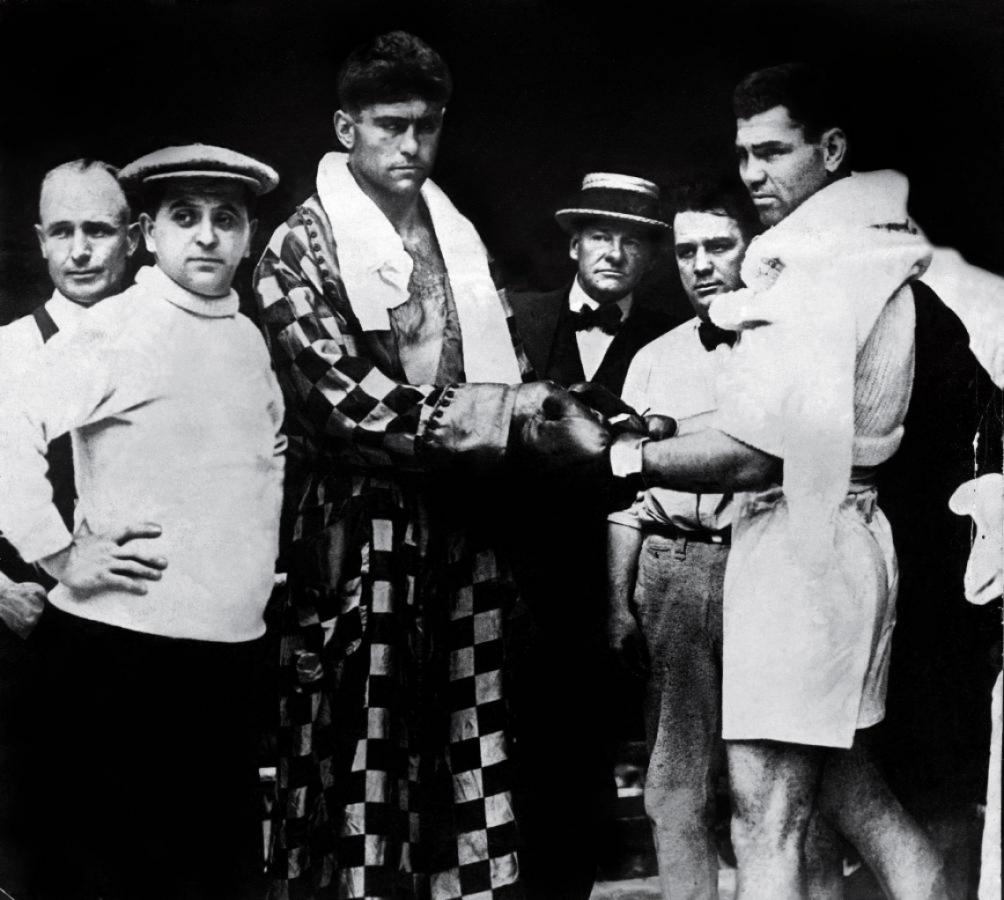
Firpo, left, meets Dempsey at the Polo Grounds 1923
